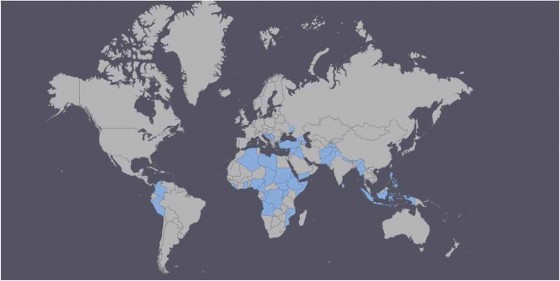
Millions of war survivors worldwide suffer from mental illness
Wars leave their marks on people – the physical damage is usually obvious, but the scars a war can leave in the psychological well-being of survivors often remain beneath the surface. Psychologists at Münster University have for the first time estimated the absolute numbers showing how many war survivors worldwide suffer from post-traumatic stress disorder or depression. The result was, that in 2015, there were about 1.45 billion people who had experienced a war in their own country between 1989 and 2015, about one billion of whom present adults – representing one in five of the world's population. It is estimated that more than 350 million of them suffered from post-traumatic stress disorder or depression, of which about one third suffered from both mental disorders.
In addition, most war survivors live in low-to-middle income countries with limited opportunities for intensive and comprehensive treatment of mental disorders. "Our results reveal a major problem. With our approach, we can better assess the current burden of mental disorders in war-affected areas and hope to be able to encourage some practical solutions for treatment," says Thole Hoppen, PhD student in the Work Unit Clinical Psychology and Psychotherapy at Münster University and first author of the paper. The study was published in the academic journal “European Journal of Psychotraumatology”.
Background and methods:

In a further step, they carried out a so-called meta-analysis - an analysis that combines existing data from multiple studies based on a new research question. They combined all available studies documenting the prevalence of post-traumatic stress disorder and depression from all affected countries and regions during the given period. In contrast to previous studies, which explicitly focused on certain groups of people, for example soldiers or refugees, the psychologists now focused on the general population and only compiled data from random samples of the entire population. This enabled them to extrapolate statistically the results of the meta-analysis. For this purpose, they also used general population data from the UN. The result of the estimate: In 2015, 354 million adult war survivors fulfilled the diagnostic criteria of post-traumatic stress disorder or depression. Of these, more than 117 million even suffered from co-morbidity, i.e. both diseases simultaneously.
The results reflect an initial estimate and must rather be viewed with caution. "Due to the limited epidemiological evidence, our results are temporary and ask for further empirical examination," Thole Hoppen and Nexhmedin Morina explain. Since the publication of the results, the two researchers have been working to compare their data with general health data from the World Health Organization (WHO). The WHO's annual Global Health Estimates include estimates of how many people in a country suffer from depression or anxiety disorders, for example. The comparison of data reveals that WHO estimates of trauma sequel disorders such as depression or post-traumatic stress disorder in 2015 were many times smaller than the recent estimates of the two psychologists. The authors recently submitted the respective manuscript to another academic journal.
Funding:
The study received financial support from the Netherlands Institute for Advanced Study in the Humanities and Social Sciences (NIAS).
Original publication:
T. H. Hoppen & N. Morina (2019). The prevalence of PTDS and major depression in the global population of adult war survivors: a meta-analytically informed estimate in absolute numbers. European Journal of Psychotraumatology; DOI: 10.1080/20008198.2019.1578637
